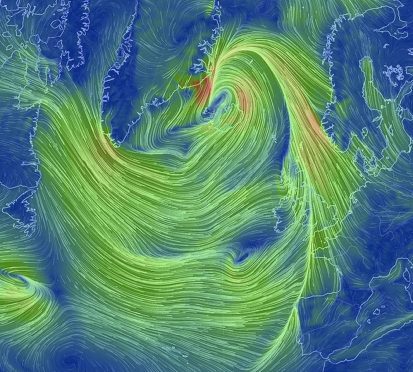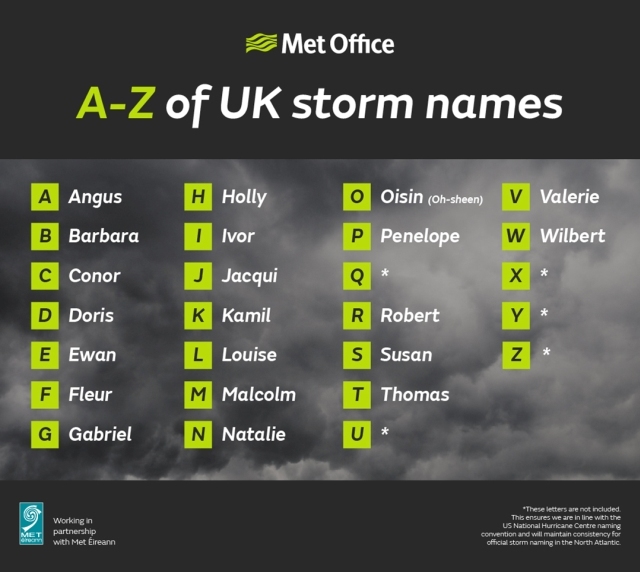Wilbert, Oisin and Kamil could brew up a storm in the UK in the next year.
They are among the monikers which will be given to the strongest weather conditions experienced by the UK and Ireland in the next 12 months.
It is the second year of the “name our storms” project by the Met Office and Met Eireann, which takes suggestions from members of the public.
The new storm-naming season will begin on October 1 and run until September next year.
Having been inundated with suggestions last year, the forecasters picked the latest names from the 10,000 entries they had already received.
The aim of the project is to raise awareness of severe weather and ensure greater safety of the public.
Storms are being named when they are deemed to have the potential to cause a substantial impact in the UK and/or Ireland.
Unlike during the pilot project, during the year ahead heavy snow and rain may be taken into account when deciding whether a storm is strong enough to be given a human name, although it will still need to be suitably windy.
Here are the names due to be assigned for 2016/2017: Angus, Barbara, Conor, Doris, Ewan, Fleur, Gabriel, Holly, Ivor, Jacqui, Kamil, Louise, Malcolm, Natalie, Oisin, Penelope, Robert, Susan, Thomas, Valerie and Wilbert.
Storms are not named using the letters Q, U, X, Y or Z in line with the naming conventions for hurricanes in the United States.

